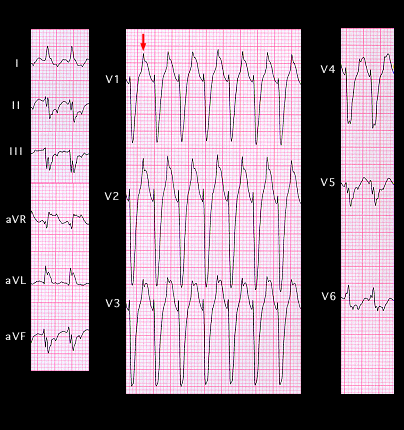
This ECG is from the same patient, recorded during an episode of tachycardia. The rate is 225 and the QRS complex is similar to the pre-excited QRS complex recorded during sinus rhythm again resembling left bundle branch block with left axis deviation. A P wave is seen just before the apex of the T wave (red arrow). It is negative in leads I, II, III, aVF, V5 and V6 and positive in leads V1-V4 The PR interval is 0.12 seconds. Although it is possible that the rhythm is an ectopic atrial tachycardia conducted over the bypass tract to the ventricles, it is much more likely that this is an AV re-entrant tachycardia in which the P waves are the result of retrograde atrial activation with an RP interval of approximately 0.16 seconds. The similarity of these QRS complexes to the pre-excited QRS complexes recorded during sinus rhythm and the long RP interval indicate that the antegrade limb of the re-entry circuit is the bypass tract and that the retrograde limb is within the AV node.
